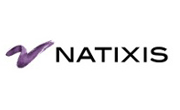MiFID II went live on January 3, 2018, but that doesn’t seem to be the end of the story. Keeping with the European Commission’s theme of “regulate first, refine later,” there is every reason to think that this regulation will continue to change. A guest post from Natixis.
When first announced, MiFID II promised to upend many views of securities finance transactions (SFTs), in particular, the notion that rates were negotiated based on counterparty and collateral. This historical market practice has worked very well in some respects, but has failed to deliver a single market quote that any participant could call “best execution.”
By contrast, MiFID II requires a policy for how asset managers deliver best execution to their clients. For SFTs, “An investment firm should apply its execution policy to each client order that it executes with a view to obtaining the best possible result for the client in accordance with that policy.”[1] Many market participants looked at securities finance and decided that this meant best execution in fees, otherwise clients would be poorly served (and asset managers penalized). Exceptions could be made but they would need to be well documented.
The MiFID II train, heavily set on its destination of best execution for securities finance, is now changing course with important consequences for the markets. What once seemed like a sure thing is now another variable of uncertainty in the European regulatory roadmap.
An early view of best execution and MiFID II
Based on a reading of MiFID II in the summer of 2017, there appeared to be multiple levels of reporting obligations on asset managers and bank market participants to prove best execution. MiFID II itself rarely mentions SFTs except in passing. Rather, a lack of exemption or special consideration meant that all of MiFID II’s rules would seem to apply. This has been a topic of substantial consternation across the industry.
In fact, MiFID II has driven best execution conversations not just in Europe but worldwide. Part of the regulation explicitly states that if a trading firm has an EU MiFID authorized counterparty, then it too is subject to MiFID II rules, will see some pre- and post-trade reporting of its activity, and may need to deliver best execution policies to their trading partners. This has contributed to a lower level of dynamism in the markets and has likely increased the drive towards automation. By some accounts, over 70% of global securities lending transactions are now conducted with little to no human intervention.
A large part of the concern has been duplicative reporting obligations. While market participants are well aware of the Securities Financing Transaction Regulation (SFTR), MiFID II seemed to presume an additional set of reporting as well.
SFTs and price formation
There has been an important debate on whether SFTs are price forming or not, and that gets to the heart of the marketplace: are SFTs a market where one best execution rate can be found, or rather a negotiated market where counterparty and collateral are the most important criteria? In the Context of the Delegated Act for MiFID II, the text states:
When executing orders or taking decision to deal in OTC products including bespoke products, the investment firm shall check the fairness of the price proposed to the client, by gathering market data used in the estimation of the price of such product and, where possible, by comparing with similar or comparable products.[2]
ISDA counters that MiFID II has its own contradictions that would exempt SFTs from reporting: “MiFID II/R, in a number of aspects, already takes account of the fact that SFTs are in themselves not outright transactions in transferable securities, but rather they are non-price forming, short-term SFTs,” and hence can claim reporting exemptions from MiFID II.[3] Already, SFTs are not bound by MiFID II’s pre- or post-trade reporting requirements.
These contradictory views of what an SFT is and the role it plays in the market have created confusion for market participants and regulators alike.
Regulatory Technical Standard (RTS) 27 and 28
By virtue of their lack of exemption, it has been critical to consider every MiFID II regulation in the context of SFTs. The European Commission has issued a series of Regulatory Technical Standards (RTS) on MiFID II; RTS 27 and 28 concern best execution across financial products.
The first complexity is whether SFTs are a transaction or a financial product. As a transaction, SFTs would be out of scope for reporting. MiFID II already recognized that SFTs are not the same as financial product trades, that execution venues are limited, and that a policy for the “best possible result” for each client is the ideal outcome.
RTS 27 is specific about the information that trading firms and execution venues are required to produce, much of which makes little sense in the context of SFTs. Among other things, RTS 27 asks for price, cost, and likelihood of execution.[4] Although the collateral and counterparty nature of SFTs mean that some quotes can be provided, they may rarely be comparable in the context of best execution. Dealers in the SFT market could be considered as liquidity providers, but again a lack of a single execution venue, and a lack of comparability across transactions, would make it difficult to prove or disprove best execution to a reporting venue.
RTS 28 asks for investment firms to provide specific reporting on SFTs, including their top five “execution venues”, which is understood to mean the dealers that borrow their securities or lend them securities. Reports on the top five venues need to include volume and number of orders, and encompass equities and bonds. RTS 28 also contains a qualitative analysis requirement that could prove challenging to many asset managers:
Investment firms must publish for each class of financial instruments a summary of the analysis and conclusions they draw from the detailed monitoring of the quality of execution obtained on the execution venues. This information will allow investors to assess the quality of execution and will help them to assess the effectiveness of the monitoring of execution policies carried out by investment firms.[5]
While RTS 27 is difficult to place in the context of SFTs, RTS 28 makes more sense and may add value to the market, especially in the qualitative analyses that asset managers must provide to their clients. This in turn supports the idea that SFTs are a transparent and normal part of financial markets, reduces the perception of risk of shadow banking, and encourages participation.
Our latest understanding is that the European Commission has made good on its promise to “refine later” in the case of MiFID II: the SFT requirements of RTS 27 and 28 may be adapted to provide appropriate information to the market without trying to fit SFTs into a model designed for cash bond or equity transactions. Investment firms may still be obligated to provide summary reporting and a qualitative analysis, but these will be for the benefit of their underlying clients and may result in a net benefit to the market anyhow.
Do SFTs need best execution?
MiFID II is not regulation for best execution; rather it is regulation for fiduciary best practice. It is focused on asset managers with supporting requirements from execution venues, liquidity providers and additional market participants. Asset managers have translated MiFID II’s requirements as a mandate for best execution in SFTs in particular, but exemptions can be documented safely and with confidence. The more philosophical question is, should SFTs be a market with best execution requirements or not?
At Natixis, our view is that fee-based best execution is not the best path forward for SFTs under MiFID II: best execution is not the single best price on any single instrument. There are many other parameters apart from price that factor into an SFT, including credit quality and collateral flexibility, settlement efficiency, and timeliness of recalls. Relying on price alone misses these important qualifiers. Portfolio managers should have the flexibility to define their own best execution policies incorporating these important elements, along with the fee itself.
 Ian Beattie is the Head of Client Development for Europe and UK within the Global Securities Financing (GSF) group at Natixis. He is responsible for maintaining and developing client relationships for the group within the European/ UK zone. Ian has spent more than 18 years in Equity Finance, including 11 years at Natixis (France/Japan).
Ian Beattie is the Head of Client Development for Europe and UK within the Global Securities Financing (GSF) group at Natixis. He is responsible for maintaining and developing client relationships for the group within the European/ UK zone. Ian has spent more than 18 years in Equity Finance, including 11 years at Natixis (France/Japan).

[1] “Commission Delegated Regulation of 25.4.2016 supplementing Directive 2014/65/EU, C(2016) 2398 final” European Commission, April 25, 2016, available at https://ec.europa.eu/transparency/regdoc/rep/3/2016/EN/3-2016-2398-EN-F1-1.PDF
[2] Ibid.
[3] “ICMA Quarterly Report Fourth Quarter 2017,” ICMA, October 11, 2017, available at https://issuu.com/icma/docs/icma_quarterly_report_fourth_quarte_a4f9c0981c2ee4
[4] “Commission Delegated Regulation of 8.6.2016 supplementing Directive 2014/65/EU, C(2016) 3333 final” European Commission, June 8, 2016, available at http://ec.europa.eu/finance/securities/docs/isd/mifid/rts/160608-rts-27_en.pdf
[5] “Commission Delegated Regulation of 8.6.2016 supplementing Directive 2014/65/EU, C(2016) 3337 final” European Commission, June 8, 2016, available at http://ec.europa.eu/finance/securities/docs/isd/mifid/rts/160608-rts-28_en.pdf


